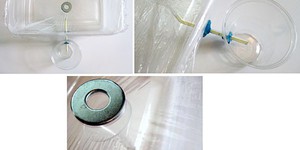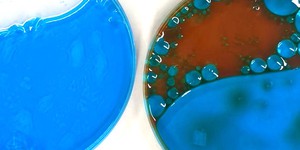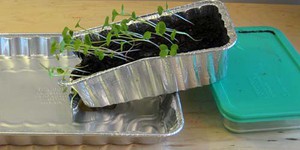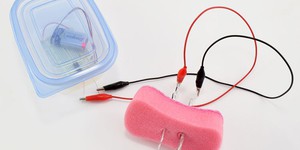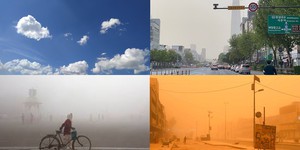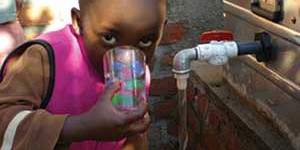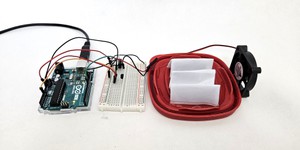Middle School, Environmental Engineering Science Projects (27 results)
The human population on Earth is now more than 7.5 billion, and growing quickly. With more and more of us living an energy-intensive, modern lifestyle, the environmental stresses from human activity continue to increase. Greenhouse gases leading to global warming and fertilizer runoff resulting in marine "dead zones" are just two examples of large-scale environmental impacts from human activity. See how science, engineering and technology can help us take good care of our environment while still enjoying the comforts of a modern lifestyle.
|
Select a resource
Coding Projects
Sort by
|
Do you filter your tap water before drinking? Many commercials claim these filters make your drinking water cleaner and safer. But what, exactly, are these filters doing, and is the water really cleaner afterward? The cleaning power comes from their filtering material, called activated carbon. It exists in various forms: powder, granules, foams, and blocks. Do you think it matters what type of activated carbon is inside the filter? In this project, you will investigate whether larger or smaller…
Read more
How can seawater from the oceans be turned into fresh water that is suitable for people to drink? Through a process called solar desalination! In this science project, you will make a solar desalination apparatus using readily available materials, and a power source that is free. How much water can the device produce, and is it still salty at all? What factors affect how effectively saltwater is turned into fresh water?
Read more
New
Have you ever walked next to your favorite ocean, lake, or creek and seen plastic waste everywhere? Have you ever thought about how much plastic breaks down into microplastics and pollutes waterways? Scientists are coming up with new ways to remove these microplastics from our waterways, and now you can test them out for yourself at home.
Read more
Soil erosion can cost the world billions of dollars every year by washing pollutants into our streams and rivers and by causing the loss of farmland. What can you do about this problem? Help save the world (and some money!) with nothing more than a few plants!
Read more
Water is a valuable resource, and water shortages are a serious problem in many parts of the world. The problem can be made worse by people who waste water; for example, by watering a garden or using sprinklers on their lawn (or a farmer taking care of an entire field) when it has rained recently or the soil is already moist. How can you help conserve water and prevent such waste? One way is to build an electronic soil moisture sensor. This project will show you how to build a circuit that…
Read more
Air pollution is a growing issue, especially in cities, due to the rise of industrial activities, increased fossil fuel consumption from things like car use, and natural events like wildfires. This pollution is measured by the Air Quality Index (AQI), which shows how clean or polluted the air is. But what if we could predict changes in AQI to help communities plan ahead to protect people who are at risk from air pollution? That’s where machine learning comes in. In this project, you will…
Read more
New
Are you ever annoyed by a poor Wi-Fi signal? What about when you try to send a text message, and it just won't go through because of poor cell service? Have you ever wondered what factors affect the strength of your signal and the speed of the connection? If so, this project is for you!
Read more
Living in the industrialized world, like the United States, we are fortunate because we don't have to worry about the quality of our drinking water. Your community has the means to clean and provide water to you. But in many parts of the world, people don't have this luxury. Whether it is due to war or poverty, the lack of clean water leads to many health and social problems. In this environmental engineering science project, you will learn about different methods to filter out impurities in…
Read more
You probably know that sweat helps cool your skin on a hot day because of evaporation. But do you think you can use evaporation to cool a building? Evaporative cooling systems could provide a more environmentally-friendly alternative to traditional air conditioning. In this engineering project you will build and try to optimize your own model evaporative cooling system.
Read more
What do humans need to survive? We need food, water, and warm shelter. We all need a warm place to live, particularly when it's chilly outside. How do many of us warm our houses or apartments? We depend on fossil fuels to supply gas and electricity to our heaters. But burning fossil fuels to create energy is harmful to the environment. What if there was a way to warm our homes without burning fossil fuels and it was free? In this science fair project, you will build a solar air heater and see…
Read more
Did you know that there is plastic in the ocean? It probably isn't too hard to imagine that some of the plastic that litters roadways, sidewalks, and parks finds its way into the ocean. So, how much do you think is in there? Hundreds of pounds of plastic? How about thousands of pounds? No one knows for sure, but estimates, based on scientific surveys, suggest the amount is in the range of millions of pounds of plastic! Of course, the ocean is big, over 300 million square kilometers, so…
Read more
Your drinking water probably started out brown and muddy. Are you surprised? Maybe you were picturing it flowing from a clean mountain spring instead? All over the world, including in 68% of American homes, people get their drinking water from rivers, lakes, and other surface waters. This water is filled with dirt, debris, and other contaminants as it travels hundreds of miles. So, how does your drinking water go from brown and muddy to crystal clear? Often, flocculants—substances that…
Read more
|



